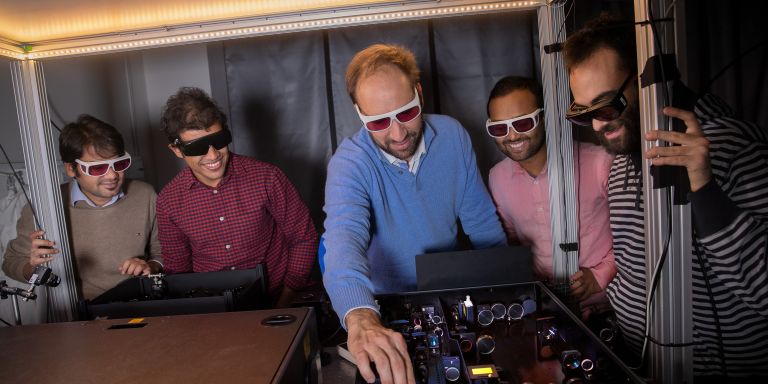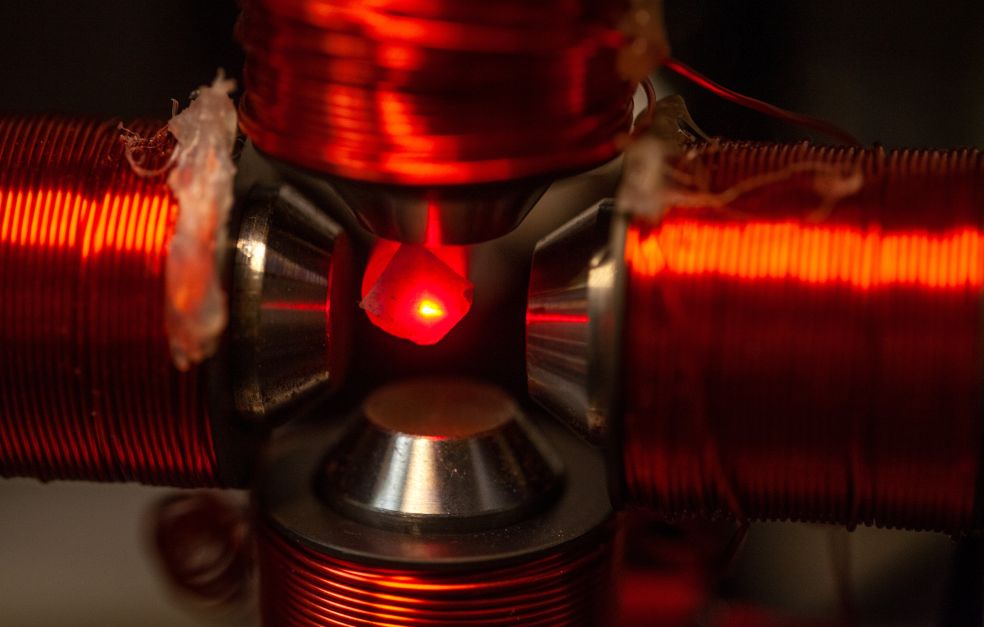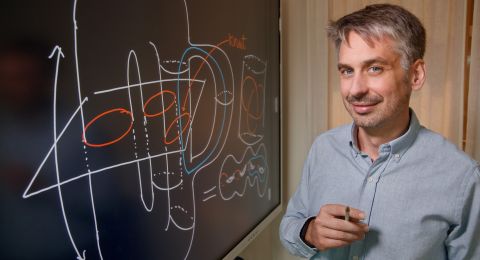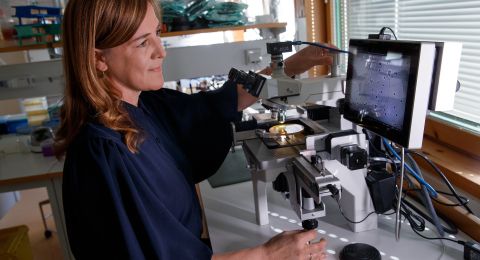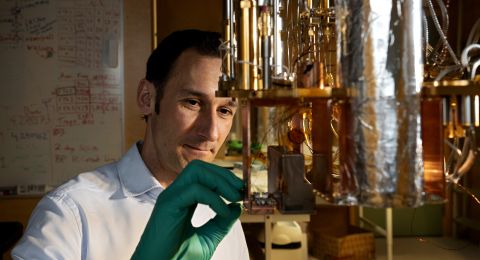In Stefano Bonetti’s laboratory at Stockholm University the researchers wear protective goggles to shield their eyes from the high-power laser beams emitted by the instruments they use. They are studying ultrafast dynamics in new quantum materials. If the properties of the materials can be controlled, they could have applications in next generation computers and information technology.
Stefano Bonetti
Associate Professor of Condensed Matter Physics
Wallenberg Academy Fellow 2017
Institution:
Stockholm University
Research field:
Ultrafast coherent control of quantum materials
“We live in an information society where we create and use ever more data. We want to watch movies with ever higher definition, and we want faster computers. Yet all this requires huge amounts of energy,” Bonetti comments.
The idea is to replace conventional semiconductors like silicon with quantum materials. A common feature of these materials is that have special properties that scientists believe can be used to perform more powerful and complex computations.
“Silicon, which is used in today’s electronics, is a fantastic material, but it has its limitations. New materials are needed that enable us to transfer, process and store information more efficiently.”
The challenge facing Bonetti and his team is to understand and to be able to control the properties of quantum materials. To this end, they have enlisted the help of state-of-the-art laser instruments.
Studying magnetism
Bonetti comes from Milan in Italy, and has been interested in science for as long as he can remember.
“My dad is a chemist, and very interested in science. He worked for a company that sold scientific instruments, so there was no shortage of microscopes at home.”
He began studying Engineering Physics at Politecnico di Milano. Three years later he was admitted to KTH Royal Institute of Technology under the Erasmus exchange program, and stayed on.
“I finished my master’s in engineering physics. In my final year we studied a subject known as condensed matter – substances in solid and to some extent fluid form, and learnt to describe how they behave. Does the material conduct heat efficiently or not? Is it magnetic? That kind of thing. They’re actually simple questions, but answering them required extremely advanced analysis, which was really interesting.”
When Bonetti received his PhD from KTH he was awarded a scholarship by the Knut and Alice Wallenberg Foundation for a postdoctoral position at Stanford University in the U.S.
“That’s where I matured as a scientist. I gained an insight into how the leading people in the field think. One of my supervisors was Jo Stöhr, a pioneer in the field of magnetism and X-rays.”
Bonetti explains that nowadays most data is stored using magnetism:
“Magnetism is one of the ‘emergent properties’ that I am studying in the quantum materials. But there are a number of others, and the idea is to find new materials whose properties allow completely new ways of storing and processing data.”
Emergent properties occur in complex systems, and are difficult to understand. Bonetti hopes to use theories of quantum mechanics and new experimental methods to help clarify the picture.
“Thanks to this grant, we will be able to conduct more curiosity-driven research. This kind of research may be riskier, and the results less certain, but it is also more exciting.”
Powerful lasers
In 2014 Bonetti began building his team for research in the field of ultrafast dynamics in condensed matter at the AlbaNova center at Stockholm University. He has been chosen as a Wallenberg Academy Fellow, and is studying emergent properties of various types of quantum material.
“Perhaps the best-known quantum material is graphene, which belongs to an entire class called Dirac materials. We are also studying other materials, known as strongly correlated materials.”
Ultra-short and high-intensity laser pulses at terahertz frequencies are used to monitor the course of events on the nanoscales at which Bonetti’s research takes place.
“This wavelength can be used to ‘shake’ atoms in a controlled way, and see what happens. We are studying what happens to magnetism, spin and other electronic properties on very small timescales and in reduced dimensions. The idea is also to give quantum materials new properties by shaking them up – properties they don’t have when they are in equilibrium.”
The laser pulses are produced by femtosecond IR lasers or femtosecond X-ray pulses generated by “free electron lasers”. The technology used to produce high-intensity ultra-short optical pulses has paved the way for many new laser applications, and the scientists behind it were awarded the Nobel Prize in Physics in 2018.
Quantum computers for all
In the lab housing the laser instruments Bonetti produces a sample of a promising material – SrTiO3 – an oxide of strontium and titanium.
“It’s a type of perovskite, looks like glass, and is non-magnetic. But we want to try to make it magnetic by hitting it with laser beams.”
A quantum material with controllable ultrafast magnetism that does not produce heat, and consumes as little energy as possible. Something like this offers potential for sustainable information and communication technology. Great challenges face researchers in this field, but Bonetti remains upbeat.
“We have to be optimistic and believe that we will find solutions, even if the goal is not yet in sight. I can envision finding materials for a quantum computer for home use. To achieve that aim it’s essential to commit to curiosity-driven research – that’s where potential breakthroughs may happen.”
Text: Susanne Rosén
Translation: Maxwell Arding
Photo: Magnus Bergström

